Diversity Doesn’t Begin at School
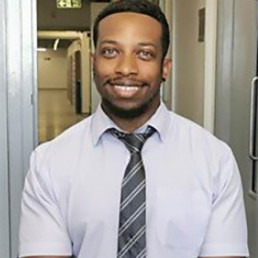
Written by Josiah Isles
Josiah Isles is an Assistant Headteacher and science teacher at Ladybridge High School in Bolton. He is passionate about improving the life chances of students from disadvantaged backgrounds.
As a member of the Diverse Educators community, I am clearly preaching to the converted when I talk about the importance of diversity in our educational settings. Instead, I want to discuss how you build positive relationships within a diverse school and the wider community. It’s a journey my school has embarked upon, full of unexpected twists and turns.
Listen to your student body
As a school, we lead by example, championing the values that are important to us. We want students to understand and see who they are, how their views fit in and how to develop their opinions. By pursuing that path, the school demonstrates behaviours that students can replicate in their lives.
But we have found that there are issues more important to the students that we wouldn’t even think of. For example, our Year 11 students recently highlighted the issue of colourism within the Asian community during a whole school presentation. We have also had to learn more about what our students call ‘pretty privilege’, a term associated with those deemed ‘conventionally pretty’. By listening to our student body, we can understand more and be better prepared when issues and challenges arise.
Immerse yourself into the community
We need to create an environment whereby students don’t have to switch codes or behaviour to accommodate school life. We should allow students to proudly display their cultural identity, which they can embrace as they transition into adulthood.
To do this successfully, we need to reach out enthusiastically to our local community. At Ladybridge High, we have a lot of Muslim students and have actively developed a relationship with our local mosque. Imams have been invited into the school to meet senior leaders. When an issue arises, we look at it from the student’s point of view. We need to step into the shoes of a Muslim student who attends school five times a week, an Islamic school on Saturdays and their local mosque every evening.
We need to remember that being a diverse school can have a huge impact on the wider community. A school is, after all, the heart of the community. Start by organising small events that will bring the community into the school. Low attendance doesn’t mean you are failing; staging regular events will send a powerful message to residents.
Ladybridge High recently held a Warm Hub event for our local community. We had people able to answer any questions visitors had about Universal Credit or food banks. They could purchase pre-loved school uniform. We even had NHS nurses offering smear tests. Attendance wasn’t great, but we will persist by staging further events. Why? We want people to see us as part of the community and an accessible resource.
Training, training, training
Yes, staff training is important when developing relationships within your school and local community. But remember to take your time. Change won’t happen overnight. Think about how you will embark on the journey. Identify areas where there are issues such as unconscious bias.
Ladybridge High has a zero tolerance to any student that uses racist or misogynistic language. The severity with which we challenge such behaviour sets an important tone for the school. Of course, there can be a wariness on the part of teachers about approaching the concepts of diversity. Individuals are rightly concerned about causing offence. Training should help teachers be comfortable with using the right words – especially when explaining offensive language. The BBC Teach website, for example, has articles written by teachers sharing their views and experience of diversity. Many more of us need to pore over its contents to take ideas that we can implement in our schools.
Let me be clear, building positive relationships within a diverse school and the wider community is not easy. It’s not something that can be completed in a term or even a school year. And you need to persist – even when you face insurmountable problems.
Josiah Isles is an Assistant Headteacher and science teacher at Ladybridge High School. For more information about BBC Teach, please visit www.bbc.co.uk/teach
Top Interview Tips for Neurodivergent Educators
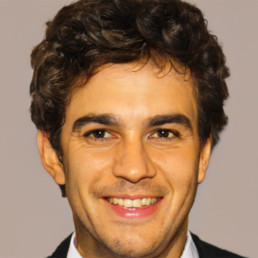
Written by Lance Craving
Freelance Content Producer and Researcher
Interviewing for a job can be stressful for any educator, but neurodivergent candidates tend to face additional challenges that can make the process particularly tough. For example, people on the autism spectrum might face sensory issues if the interview environment is overwhelming. Those with dyslexia may struggle if asked to complete reading and writing-based tasks during an interview.
Providing that you prepare for an interview carefully, there’s no reason why you can’t put your best self forward and have a successful experience as a neurodivergent candidate. Here are three tips to help you prepare for your next interview.
https://unsplash.com/photos/eF7HN40WbAQ
1. Consider disclosing your neurodivergent status in advance
It isn’t essential to disclose your neurodivergent status to a potential employer, but it can be incredibly helpful to do so if you require accommodations for the interview. It might also help you to feel more relaxed and confident in the interview if you don’t feel compelled to hide the fact that you’re neurodivergent. Many people worry that disclosing before an interview could lead to discrimination, but the Equality Act protects you against this. Employers are obliged to consider making reasonable adjustments for interviews when candidates request them, and they cannot discriminate against jobseekers with disabilities.
https://unsplash.com/photos/3iiR4ScIPjs
2. Use the STAR technique to give concise, meaningful answers
If you worry that you may talk too much or too little during an interview, or that you’ll lose track of the questions and fall off topic, the STAR technique could be useful. It helps you to structure answers to behavioural or competency-based questions to give concise examples of your experience and the results you’ve achieved. STAR stands for situation, task, action, results. You describe the context of your example, the task or challenge you had to resolve, the action you took to achieve the goal, and the outcome of your action. The STAR technique is a great way to answer questions like:
- Describe a time you resolved a conflict at work.
- Have you ever had to deal with a student safeguarding issue?
- What would you do if you noticed a colleague made an error?
https://unsplash.com/photos/9cd8qOgeNIY
3. Prepare questions of your own
Interviews go both ways. Employers want to find out if a candidate is the right fit for the job, and candidates want to find out if the job and workplace suits them. Most interviewers give candidates an opportunity to ask questions about the role and the working environment. This is a great opportunity for you to learn more about the job and determine whether the workplace seems supportive of neurodivergent employees. If you have a few questions prepared, this can help you to come across as confident and show that you’re already imagining how you would fit into the role.
Confidence is key to interview success
Unemployment amongst neurodivergent people is as high as 30 to 40%. If we’re to reduce these rates, it’s vital that neurodivergent people approach interviews and jobs with confidence. Doing so will help you to assert your additional accommodations to ensure your interview is as accessible and comfortable as possible. It will also help you to highlight the great strengths your neurodiversity brings that make you such a valuable educator and the right candidate for the job.
The Intersection of Diversity and Climate Justice
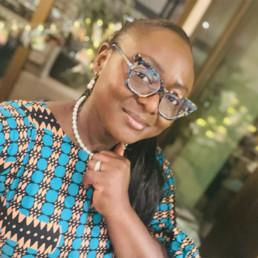
Written by Ndah Mbawa
Ndah runs Happier Every Chapter, a literacy service committed to helping schools and families improve diversity awareness and reading attainment through library diversity audits and the provision of diverse, inclusive and representative bestsellers for children. Her passion for decolonising mindsets within the school-to-workplace pipeline and supercharging the will/skill to read is shared by her teenage daughters, Kirsten & Aiyven.
The issue of climate change affects us all regardless of race, ethnicity, gender, or socioeconomic status. Be that as it may, it is becoming increasingly clear that certain communities are disproportionately more impacted by the effects of climate change, and that these communities often belong to groups who have historically faced discrimination and marginalization. The intersection of diversity and climate justice is one that cannot be ignored. It must be addressed if the hope to build a sustainable and just future for all is to be realised.
Take the uneven distribution of environmental burdens and benefits as a case in point of how diversity intersects with climate justice. Largely, communities of colour and low-income communities are more likely to live near polluting industries and toxic waste sites, and are therefore more likely to suffer from the health impacts of pollution and environmental degradation. If you don’t believe me, this Princeton University article may convince you. When I watched the critically acclaimed Erin Brokovitch in 2000, I didn’t realise the issue was as severe as Black People being 75% more likely to live in fence line communities than White People in the United States. These same communities are also more likely to experience the devastating effects of climate change, such as flooding, heat waves, and droughts. They are therefore facing a double burden: more likely to be exposed to environmental harms, and more vulnerable to the impacts of climate change. Coming back to our shores, according to the Environment Agency, households within 20% of the most socially deprived areas in the UK have a greater likelihood of flood risk than households in less deprived areas. The Grenfell tower fire incident of 2017 revealed a deep division between the rich and poor. Had the cladding which the developers used as a case for climate change to reduce the operational energy/emission costs not been flammable, we wouldn’t be having this conversation. The tragedy of this community which even though located in one of London’s wealthiest boroughs had become the most unequal place in Britain, exposed the underlining gaping social inequalities in our society as well as poorly informed climate change/justice initiatives and weak control over conditions pertaining to the already constantly degrading state of low-cost renting. This Guardian article put it well when it said, “fire is an inequality issue”.
Whether in North America, Europe, Australia or Africa, the recognition of traditional knowledge and indigenous perspectives is waning to dire levels. Indigenous communities who have thrived and lived in harmony with the natural environment for thousands of years have developed sophisticated strategies for adapting to changes in the climate. However, today, these communities are often excluded from decision-making processes around climate justice and have little to no voice in shaping policy. Makes you wonder how much education on climate change reaches communities like this in the first place. Surely the Inuit communities in the Greenland or Quebec who are experiencing melting sea ice making hunting and fishing more dangerous and unpredictable wouldn’t mind contributing to initiatives that may affect the future of their natural environment? Maybe we are missing a trick. Maybe by recognizing and valuing traditional knowledge and indigenous perspectives, we can build more sustainable and resilient systems that are better equipped to address the challenges of climate change in those particular places. For the climate justice movement to be inclusive, equitable and authentic, diversity of the key players is critical. Being a global problem, it requires collective action with engagement of a wide range of stakeholders from all impacted communities whether that be the younger generation, women, global majority people and others who have traditionally been excluded from decision-making processes.
Suffice to say, the intersection of diversity and climate justice is a critical issue that demands our urgent attention and action. The hope of a sustainable and just future for all might be a bit of a struggle to achieve without the due address that this status quo needs. There’s no denying the impact and relentless onslaught of climate change but as a collective we don’t seem ready. Hurricane Katrina in 2005 showed just how much when the low-income communities in New Orleans were disproportionately affected because they lacked the resources to evacuate or rebuild their homes.
While we carry on with efforts to educate our generation, we mustn’t forget the younger generation who will bear the brunt of our actions and decisions. It is also vital to educate them on climate change and how they can limit its advancement. One excellent way to do this is through books. Have a read of our blog post with some amazing book recommendations to teach children all about climate change in celebration of Earth Day.
If you are an educator looking to improve the literacy outcomes of your pupils especially the lowest attaining 20% or you simply want to diversify your school library collection, then speak to us. Happier Every Chapter works with schools, academies across the UK to improve reading attainment and diversity awareness through diversity audits and monthly boxes/bundles of diverse, inclusive and representative bestsellers with different curriculum aligned themes each month.
School Exclusion is a Safeguarding Issue
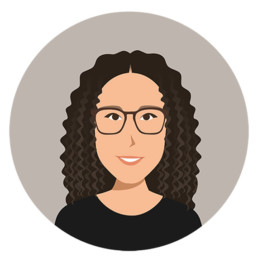
Written by Parise Carmichael-Murphy
Parise has worked with children and young people across the 0-25 age range in early years, specialist support secondary education, supported learning in further education, youth work, and inpatient settings.
School exclusion is a trigger point for risk of serious harm to young people. Young people excluded from school are more likely to experience social exclusion. They are placed at greater risk of developing severe mental health problems, obtaining education qualifications, experiencing unemployment, and being imprisoned. School exclusions can lead to isolation, which can be distressing and traumatic for a young person. This can have a detrimental impact on their mental health.
Pupil views of school exclusion suggest that they understand, or are aware, of the behaviours that may result in exclusion from their school. However, this does not mean that they have a similar understanding or awareness of the potential repercussions of school exclusion across the life course. Young people voice that exclusions can exacerbate difficult situations, lead to negative labelling, and limit school and learning time.
Statutory guidance on suspension and permanent exclusion clarify the headteacher’s duty to inform parties about exclusion, which lists parents, social workers, virtual school heads, local authorities and governing boards. However, the guidance does not clarify how the young person who experiences the exclusion should be informed and school policies are not typically worded in a way that is accessible or meaningful to young people.
Coram showed that the exclusion process or decision is not always made apparent to the young person who is expelled from school. Young people feel that exclusions are unfair or unjust when they have little opportunity to have their voices or concerns heard or appreciated throughout the process. Young people are likely to benefit from clearer guidance and better-regulated processes for involving them in any considerations being made to exclude them from school. This guidance should cover all means of ‘hidden’ exclusion, such as internal seclusion, managed moves, early exits and restricted timetabling.
Ofsted recognises the impact of school exclusion on restricting learning time, but not for placing young people at greater risk of harm. To better safeguard young people in schools, greater recognition of how cultures, systems and structures can place young people at risk of experiencing vulnerability or harm is vital. The growing number of exclusions for drug and alcohol-related incidents is contributing to the criminalisation of young people in education. The high-profile case of Child Q and the local safeguarding review revealed a failure to safeguard a young person at school. Those in positions of responsibility and authority overlooked risk present in the school and wider community environments; instead locating the ‘risk’ with Child Q. Child Q’s alleged connection with another young person who had been excluded from school was given as a reason to permit a strip search on school premises.
Clearer safeguards are needed to protect young people from exclusion in context of local needs. Schools should be both accountable and responsiblev for the safeguarding implications of school exclusion. This requires better funding, infrastructure and organisation as well as targeted mental health support services.
Being Comfortable Being Uncomfortable
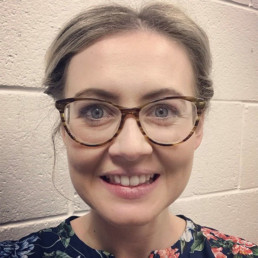
Written by Bethan Hughes
Bethan Hughes is a Second in English in a West Midlands secondary school and joint contributor to the LGBTQ+ toolkit on Diverse Educators.
I am a 33-year-old lesbian who has, probably only recently, become really quite comfortable in my own skin. The irony being that this is, probably only because of a lifetime of enduring being uncomfortable. When you exist outside the norms of society and outside of the dominant discourse, there is an odd sense of not quite ever being ‘inside’ where it is comfortable and instead watching from the other side of the metaphorical windowpane.
What does it actually mean to be comfortable? Comfortable is synonymous with safety, being content with where you are and what’s happening and maintaining the status quo. Comfortable keeps things the same. Being comfortable allows the same practices to continue. Which unless you are a white, heterosexual male might not be beneficial to you and contribute, whether directly or indirectly, to more challenges for others.
Yet to shatter, or at least wobble, the status quo involves putting yourself into a more uncomfortable position. It means speaking up in a meeting if you don’t agree with something or holding someone to account if their views or actions don’t align with what you believe to be morally right. It means having difficult conversations which might not go the way that you want them to go. It’s taking a deep breath, closing your eyes and being prepared to be the first domino to fall. And that’s tough. Especially when you could choose to take the easier route by keeping your mouth shut and trundling on with your daily business. And so, the cycle continues.
Why should I want to be uncomfortable, I hear you say? If we (truly) want to live in a just society then we all need to play our part. But we can’t do this if we are only focusing on the struggles that we personally face; as Martin Luther King said, “no one is free until we are all free.” If we can begin to take steps towards change by only being a tad uncomfortable, surely this is something that we can all commit to?
What might this look like in my educational setting?
- Always start from a place of mutual respect. If you are heading into difficult conversation territory, then this is always a solid start.
- When a student makes a comment or asks a ‘difficult’ question – explore it. Instead of ignoring a ‘that’s so gay,’ comment, address it and explain why the phrase is derogatory. Sometimes a conversation can begin to change someone’s attitudes or at least begin to challenge their ingrained value system.
- If you notice someone being spoken over in a meeting or their ideas not being heard; use your privilege to support that person or to credit their ideas. Consider when you are the most, or one of the most, powerful people in the room and how you can use this to amplify the voices of others. Or, if you don’t hold that power, can you join forces with someone else and support each other?
- Speak to share and not change minds. Use your voice to share your experience or your own feelings whilst being mindful that a conversation often won’t be enough to completely change someone’s mind. Share first and understand that changing minds can be a longer process.
- Speak from your personal experience and not on behalf of others. Also be open to credible sources when discussing information that is not personal to you.
- If you notice something that needs addressing, bring it up to those who have the power to change it. Perhaps the display in the science corridor only celebrates the achievements of men. Perhaps there is a lack of diversity in your English curriculum. Perhaps there is limited policy or support for your LGBTQ+ students. Be brave enough to have that conversation and to do something about it.
- Be patient with yourself and others. Change takes time but begins once we start to go into those uncomfortable spaces.
It’s easy to do nothing but if you have the privilege to do so; be 10% braver and have that conversation so that some of us who are perpetually uncomfortable, can be a little more comfortable.
As Educators What Do We Owe to Our Children?
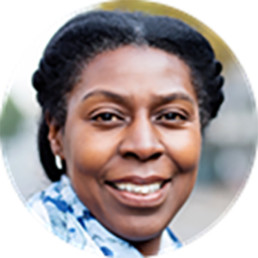
Written by Rosie Peters
Rosie Peters has been in education for over 20 years and is currently working as a Co-Head of School. She is passionate about improving children’s life chances and strongly believes in the power of mentoring and representation.
As educators, what do we owe to our children? Surely it should be an education where each and every child feels represented within the education system and the curriculum.
An early-years setting that says welcome, I hear you and I see you, instantly communicates to the child that they belong. In turn the child recognises and sees familiarity within the physical environment, the faces they encounter, the words that they hear.
For a child that has little English, a simple hello in their first language can make a world of difference. Books opened and read aloud, bridge reality with the imaginary with ease because someone has taken the time to check there is true representation of the children entrusted to them as they embark on what should be a wonderful adventure of education, full of excitement and discovery.
We want all our young people, regardless of colour, class religion, gender or ability to experience a shaping of belonging and identity that is positive, clear and authentic. We are responsible for shaping their views and attitudes of self and others.
Pupils should be made aware of the true contributions made by their ancestors and the ancestors of their diverse peers.
Starting with a Primary History curriculum that gives the full story by bringing back the erased and forgotten: the Aurelian Moors who were Roman soldiers based in Britain; the Ivory Bangled Lady; Septimius Severus a Roman Emperor. ‘We can be certain that people from Africa lived here more than 1,700 years ago.’ (Black and British, a Short Essential History; David Olusoga 2020.)
In history wonderful websites such as ‘Another History is Possible’ or ‘Meanwhile Elsewhere’, gives insight to other equally important global events that took place at the same time as the eras covered in the national curriculum.
A curriculum that allows different perspectives to be taught – from the point of view of, for example, race, gender, class, religion, disability and age, would give a strong message that diversity is not only accepted but essential.
A curriculum that develops and champions critical thinkers who are able to question, to ask why, is essential. Why, for example, during the VE Day celebrations in the summer of 2020 Black and Asians soldiers were barely mentioned. Why, in certain professions, there is little or no representation from non-white communities.
Let’s empower young people by ensuring that the curriculum and experiences they encounter are reflected through the role models we choose, the places we focus on and the cultural connections we celebrate. There is no subject in which diversity and inclusion cannot be embedded and made the norm. With a bit of time and effort it is amazing what can be achieved.
Educators need to be supported and provided with CPD to enable them to become ‘racially literate’ and able to talk openly about racism; in other, words not shy away from uncomfortable discussions. They need to be aware that terminology is forever changing and that it is better to ask someone what they prefer to be called: Black, Black British, Black Caribbean, Roma or Romani … rather than avoid it.
Teachers that go all out to make sure that someone’s name is pronounced correctly show children that their name is important; it is part of their history and culture. ‘It is not the first mispronunciation that stays with the student, it is the failure to learn how the name is pronounced and then the continued incorrect pronunciation on the second, third, fourth attempt. The unfortunate consequence, witnessed first-hand, is that students with names from different backgrounds start to hide their names. Their pride in their own heritage is eroded. (Diversity in School, Bennie Kara 2021)
We all have the responsibility to engineer change. Lack of knowledge of different people causes a lack of trust, fear, conflict and animosity. Educators need to be instrumental in changing society in a meaningful way.
The pandemic has highlighted the inequalities that exist in our society and the mistrust that some communities have in our institutions such as the justice system, the police and the medical profession. This is built on decades of negative experiences and unfair treatment endured by marginalised communities. One only has to look at key data sighted in the Office of National Statistics 2017/18:
- Fifty-five percent of Black Caribbean pupils achieved the expected standard in reading, writing & maths (The lowest percentage out of all ethnic groups after White Irish Traveller and Gypsy Roma pupils.)
- Three times more likely to be permanently excluded than their white peers.
- Forty-five percent of Black Caribbean live in rented social housing, compared with 16% White British (2016/17)
- Black Caribbean women are five times more likely to die in childbirth than their British counterparts.
This lack of trust can have a devastating impact on minority groups. A prime example can be seen in the low rate of uptake for the COVID-19 vaccine amongst the Black and Asian communities. This surely has to change.
We need to come together and work for the common good. It should not be the responsibility of one community, usually the community being most affected. It has to be the responsibility of everyone; the majority: white allies, working alongside the minority.
Wouldn’t it be wonderful to produce children who have a full sense of belonging; knowing where they have come from and where they are going and, in equal measure, hold the same knowledge of their diverse peers.
Imagine if this were the reality, there would be less racism, prejudice, unconscious bias and the inequalities we see today.
Agency would be for all and not the chosen.
The decision makers of tomorrow would mirror the richness of society’s diversity and therefore decisions on a local and global scale would recognise and address inequality and bring equity where required.
Some educators have already started this journey; a journey we should all embrace in order to bring into being a more equal society for our children, the leaders of tomorrow.
The green shoots of change can already be seen. Let’s hope they fully blossom.
Teaching is a great profession especially when we recognise that education is a powerful vehicle for creating better human beings.

